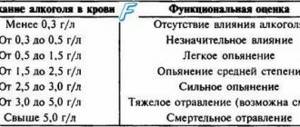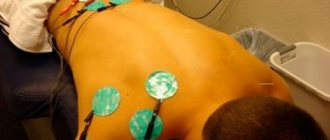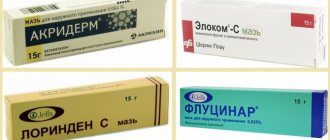Causes of stomach pain very bad
However, the first question that medical professionals most often ask is the nature of the pain, as this allows them to narrow down the possible causes and decide what to do first.
- The next characteristic that helps both the specialist and the patient to suggest a possible cause of pain is the area where the pain manifests itself. A
pronounced acute pain syndrome that continues for a long time may indicate complications of the ulcer, possibly perforation. - Regular, dull pain of no different intensity can be a sign of the formation of malignant or benign formations in the digestive organs.
- A sharp pain syndrome that usually occurs quite suddenly is a symptom of a duodenal ulcer, cholecystitis or pancreatitis.
- Pain immediately after eating, or during intense hunger, indicates gastritis. At the same time, at the acute stage, the pain syndrome is characterized by a burning sensation; when it becomes chronic, the pain becomes nagging and dull.
- A bright, sudden pain syndrome may indicate intoxication of the body, various forms of burns of the mucous membrane.
- Severe pain, manifested by contractions, usually indicates infectious, viral, bacterial diseases.
- A sharp pain that lasts several seconds is a symptom of a problem with blood flow, as spasms of the diaphragm are provoked.
- Acute and severe pain, localized in the central part, and then gradually moving to the right side is a clinical sign of appendicitis.
The above reasons are only part of the possible diseases that cause abdominal pain. However, almost all such pathologies require qualified treatment. That is why the question of what to do at home if your stomach hurts is not relevant in some cases.
Dull pain in the abdomen - when a visit to the doctor is necessary
It is clear that in most cases people relieve pain by taking appropriate medications. But, under certain circumstances, the help of a doctor is necessary:
- If the discomfort is pronounced and a person cannot endure the pain, he loses consciousness, his pulse quickens, and his heart rhythm is disturbed.
- When other, concomitant symptoms are present: severe, paroxysmal or constant vomiting, diarrhea, which threatens severe dehydration of the body.
- If, against the background of pain, the body temperature has increased, a fever has set in, the person is covered in sticky sweat, or his body temperature cannot be stabilized in any way.
- Vomiting of blood began or its impurities appeared in the stool.
- For several days the patient refuses food and water.
- If feces come out together with purulent or mucopurulent discharge, they have an unpleasant, specific odor.
- When there is no stool for several days, belching with the taste or smell of rot is disturbing.
Pregnant women, children under 3 years of age, and elderly people are hospitalized with severe pain, even in the absence of concomitant symptoms. The problem is that diagnosis is difficult in these patient groups. Patients with obvious disturbances in the functioning of the endocrine and immune systems also require hospitalization.
Stomach hurts very badly: location of pain
The next characteristic that helps both the specialist and the patient suggest a possible cause of pain is the area where the pain manifests itself.
According to the localization of the pain syndrome, the following causes are distinguished:
- On the left side, the pain syndrome can be of a different nature - such a manifestation may indicate pathologies of the large intestine, pancreas;
- Pain arising on the right side, radiating to the back, center of the abdominal region - signs of the development of an inflammatory process in the gallbladder, pancreas, and small intestine.
- Chronic and acute ulcers, gastritis, cholecystitis, pancreatitis, peritonitis are characterized by pain located between the solar plexus and the navel.
- Pain syndrome that appears below the navel area is a characteristic symptom of pathologies of the genitourinary and reproductive systems; in addition, this localization may indicate intestinal diseases.
- Pain surrounding the navel, that is, located in the central region of the stomach, usually indicates appendicitis. In this case, emergency hospitalization of the patient is necessary, since there is a threat to life.
It should be noted that pain tends to radiate to one area or another, so it is impossible to independently identify the problem and make a diagnosis.
You need to seek qualified help and, if necessary, undergo diagnostic procedures.
Location and nature of pain
Unpleasant sensations can be local or local in nature and occur in a certain area. Assessing such symptoms, the area of localization of unpleasant sensations, helps in diagnosing diseases.
Table 2. Localization of pain
| On the left side of the abdomen: | The culprit may be inflammation of the kidney or the release of a calculus. In this case, the sensations intensify with deep breathing. Unilateral pain often occurs with tumors, polyps, and ischemia of internal organs. |
| On the right side: | For pathologies of the liver, biliary system, inflammation of the gallbladder, viral and other diseases of this organ. And also in case of poisoning, including surrogate alcohol, with severe, toxic damage to liver cells. |
| In the lower part: | With pancreatitis, acute, unpleasant sensations, with diabetes. In this case, the pain is girdling in nature. |
| In the navel area or in the middle: | For inflammatory diseases of the digestive tract, appendicitis, muscle spasms. In case of poisoning, they are accompanied by a “clinic of acute abdomen”. |
| Up: | In diseases of the stomach and esophagus, the sensations are unpleasant and pronounced. For gastritis. For a heart attack, as well as some other heart diseases. Less common with pneumonia due to spasms of the diaphragm. |
Read: Positive test for Helicobacter: what to do with this test result?
The upper abdomen hurts very badly, what should I do?
The pain is concentrated in the center of the abdomen in its upper part (“it hurts in the pit of the stomach”).
The causes of such pain can be varied.
Sensations: sharp pain, radiating to the sternum, and rumbling is heard in the stomach. These signs may suggest gastritis. The most common cause of inflammation of the gastric mucosa is the bacteria Helicobacter pylori. They irritate the walls of the stomach, and excess production of hydrochloric acid, which is released in response to irritation, leads to the development of inflammation.
There are two types of gastritis:
- Hyperacid, which develops against the background of increased acidity of gastric juice.
- Hypoacid, which occurs against the background of low acidity of gastric juice. The cause of inflammation is impaired digestion of food and its rotting in the stomach. In addition, such an environment is ideal for the proliferation of Helicobacter pylori.
With exacerbation of gastritis, the pain slowly fades away. If they continue to bother a person for a long time and do not lose intensity, then a stomach and/or duodenal ulcer can be suspected.
Pain in the upper abdomen can be caused by myocardial infarction. At the same time, they radiate to the left hand. Delay in seeking medical help in this case can result in death.
Inflammation of the appendix can also cause pain in the upper abdomen. Moreover, the pain will be very intense. After a while they can switch to the right side. Therefore, until the patient has been examined by a specialist, it is better to stop taking analgesics. If the pain is dulled, it may be difficult to make a correct diagnosis.
Even if the abdominal pain in the pit of the stomach went away on its own and you didn’t have to call an ambulance, you still need to make an appointment with a gastroenterologist. If the doctor prescribes FGDS, then you should not refuse to undergo the procedure. Only with its help will it be possible to make a diagnosis as accurately as possible, and therefore receive adequate treatment for the disease.
My stomach hurts very badly, what should I do?
Activated carbon solution is good for relieving spasms in the abdomen and stomach.
If you are sure that you can do without medical help, try at home to relieve the feeling of heaviness in the stomach or grumbling with simple means.
- In any case, it wouldn’t hurt to take a Festal or Mezim tablet.
- Activated carbon solution relieves spasms in the abdomen and stomach well. The drug removes toxins from the body, eliminates toxins, and relieves pain. For oral administration, dilute 50 g of crushed charcoal in 150 ml of warm water and drink. Usually after 20 minutes. unpleasant symptoms go away.
- The drug "Polysorb" has a good effect.
- Herbal collection
An infusion of the gastrointestinal collection will help cope with abdominal pain that does not require serious medical intervention.
My stomach hurts very badly, what to do: folk remedies
Today, in the fight against stomach pain, not only traditional medicine methods, but also folk recipes are actively used. Most of these methods allow you to relieve pain quite quickly and without harm to health.
But please note that symptomatic treatment is not always effective, since it does not affect the cause of pain.
In addition, before using unconventional methods, consultation with your doctor is required.
- Tincture of cumin seeds and lemon balm - a recipe that will relieve inflammation and relax the smooth muscles of the stomach. 20 g of dried lemon balm, 10 g of cumin are poured into 500 ml of purified water. Then cook for 10-20 minutes. The resulting broth is filtered and cooled. It is necessary to take one glass per day for severe pain or exacerbation of chronic pathologies.
- A method to combat ulcers and gastritis . Pass 1 potato tuber through a juicer, add 200 ml of water and 2 tbsp. l honey, mix thoroughly. Place the resulting broth in the refrigerator for several hours. Drink 150-200 ml of the infusion before going to bed.
- Recipe to help fight infections . 100 g of rose hips are boiled until the broth acquires a rich red color, after which a few balls of fresh pepper are added and filtered. Take 100 ml once a day. This decoction is contraindicated for inflammatory processes, gastritis, and ulcers. As a rule, alternative medicine methods are used as a supplement, but not as the main treatment.
- Herbal collection . An infusion of the gastrointestinal collection will help cope with abdominal pain that does not require serious medical intervention.
- of rose hips, St. John's wort, yarrow, thyme, nettle leaves, peppermint, plantain, stevia, sage, chamomile flowers, linden, calamus rhizome, and chaga has an excellent analgesic and anti-inflammatory effect
- It will not be superfluous to have a ready-made pharmacy collection at home . It is easy to use: pour 200 ml of boiling water into a filter bag (1 piece), leave in a warm place under a lid for 15 minutes. You need to take the product 2 times a day with meals, 200 g.
Stomach hurts very badly: warning
- Take strong medications and medications that have an analgesic effect on your own . Otherwise, the picture of the disease may be disrupted, which may lead to an incorrect diagnosis. In addition, taking certain medications can cause complications.
- There is no need to try to relieve pain with hot objects, since this can worsen the condition several times and speed up the progression of pathologies . Doctors recommend placing a cold heating pad or other cool objects on the sore area before the ambulance arrives.
- If your stomach hurts very badly, you should never try to self-medicate or ignore the pain.
Especially if abdominal pain is accompanied by an increase in body temperature, abnormal bowel movements or other symptoms.
In this situation, it is important and necessary to obtain emergency medical care. Following such recommendations will reduce pain without harming the body. In addition, such rules allow you to preserve the clinical picture, which allows you to make a more accurate diagnosis and begin treatment.
Rules for the provision of pre-hospital medical care
With symptoms of an acute abdomen, without special knowledge it is quite difficult to determine the disease, the nature of the pain and the amount of necessary therapeutic interventions. Until the exact cause of pain in the abdominal area is determined, it is prohibited to take painkillers and antispasmodics. The patient may feel a little better after taking the medication, but this will not eliminate the root cause of the disease.
A simple example would be simple appendicitis, which is characterized by acute pain in the lower abdomen on the right. By taking an antispasmodic drug, the pain will subside, but the inflammatory process will progress until the wall of the appendix bursts.
Symptoms of appendicitis
The contents, along with purulent-necrotic masses, will enter the abdominal cavity, causing peritonitis. Even with surgical intervention, such appendicitis will be diagnosed as complicated, and the rehabilitation period will increase several times.
If pain appears in the abdominal area, you must call a doctor before he arrives:
- calm and put the patient to bed;
- You can apply an ice pack or a cold compress to the abdominal area;
- exclude food intake;
- if you are thirsty, you can give a couple of tablespoons of water to drink or moisten your lips with water acidified with lemon juice;
- when vomiting, it is advisable to collect and leave a small amount of vomit until the doctor arrives, especially if it contains particles of blood;
- it is necessary to monitor the patient’s body temperature, as well as vital indicators (blood pressure, pulse, respiratory rate).









